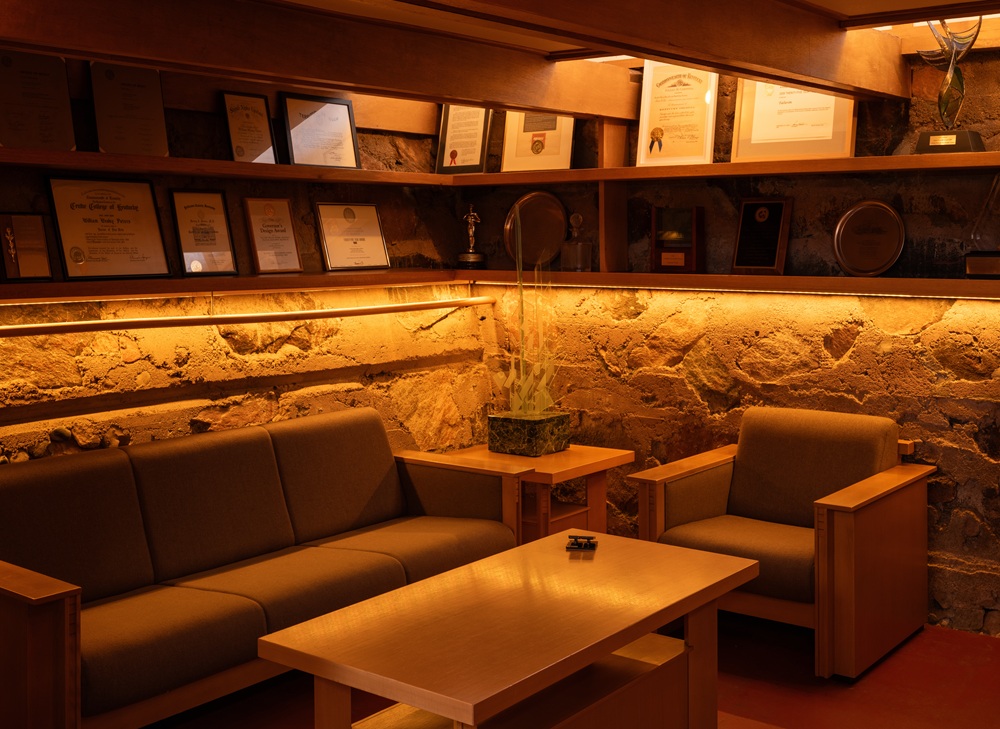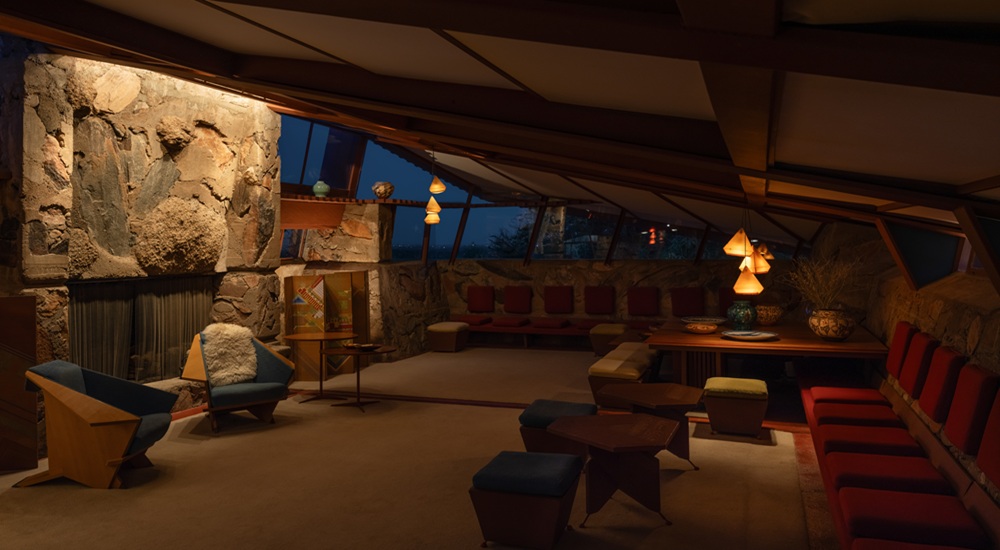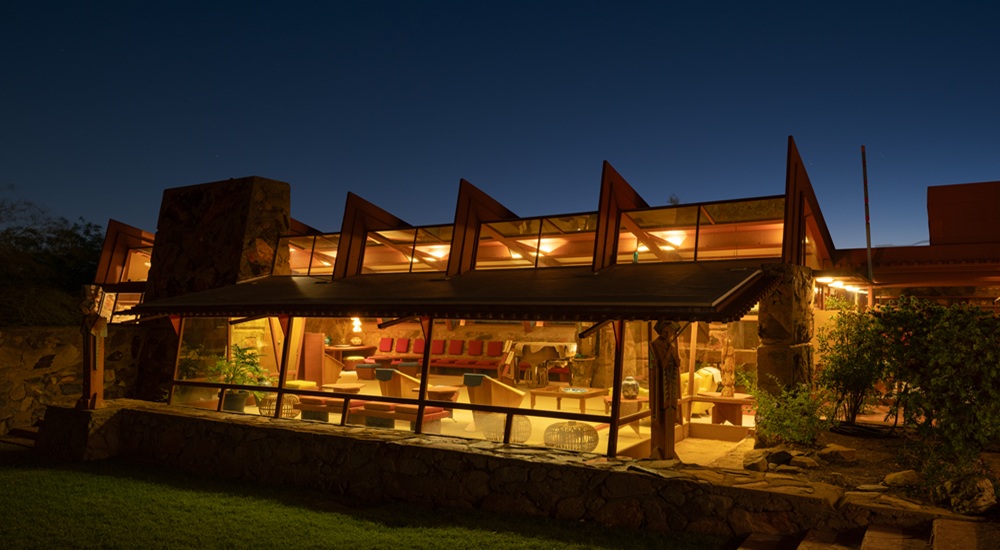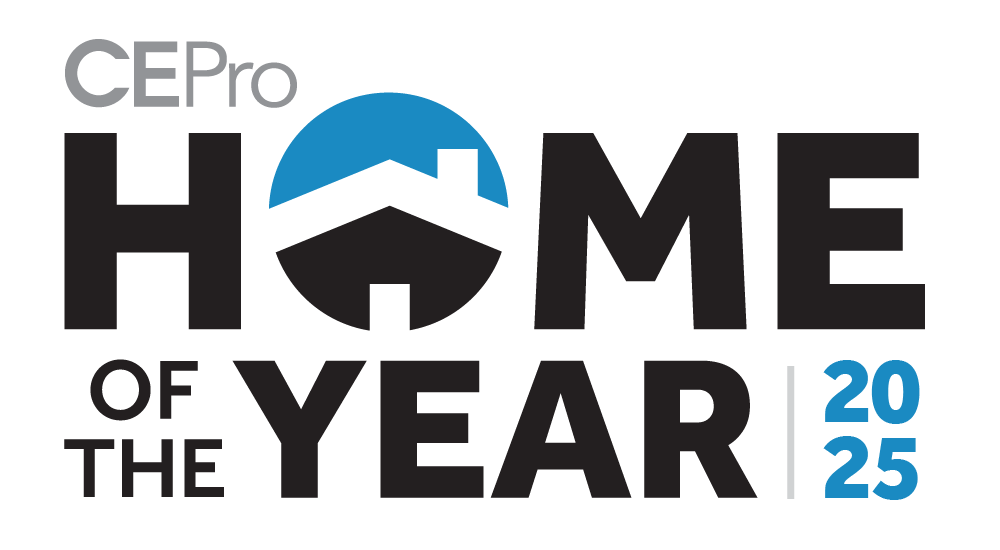When the Frank Lloyd Wright Foundation sought to enhance the lighting experience at Taliesin West, the renowned architect’s winter home and laboratory in Scottsdale, Arizona, they found the ideal partner in Lutron and custom integration firm Wipliance. Leveraging rich lighting and wireless control systems, the Foundation was able to honor Wright’s legacy of innovation while protecting the site’s fragile infrastructure and historic design.
Built in 1937, Taliesin West is a UNESCO World Heritage site and National Historic Landmark that today welcomes more than 100,000 visitors annually. The Foundation is responsible for maintaining Wright’s original structures and preserving their character while adapting the campus for modern use. That dual challenge was particularly pressing when it came to light.
Challenges and Structural Constraints Retrofitting Taliesin West

A conference room sitting area at Taliesin West. Image/Lutron
Originally lit by daylight, firelight and low-wattage incandescent bulbs, Taliesin West once glowed with warm tones that complemented its desert surroundings. Over the years, however, the site had relied on outdated lighting systems that were inconsistent, degraded over time and limited in controllability.
Fred Prozzillo, The Nord McClintock Family VP of Preservation and Collections, said when the team saw the brand Ketra’s ability to create almost infinite light values, they recognized the opportunity to present the historic core of the Taliesin West.
Related News: Submissions for the 2025 CE Pro Home of the Year Awards Open
“And because it was a wireless solution, there was no compromise to the structure of the buildings,” Prozzillo says. “Frank Lloyd Wright was all about testing boundaries and using new technologies. Everything just fit. We could maintain that historic character and continue the legacy of innovation.”
The structural realities of Taliesin West posed significant constraints. Its stone walls—hand-formed from local materials—are up to two feet thick and lack internal conduits. The original wiring, while still functional, could not be altered. Wright’s original fixtures are delicate, making maintenance a careful endeavor.
“It is because of our constraints that we need a flexible solution that can work in these difficult spaces, is easy to maintain, and allows us to be creative,” explained Stuart Graff, President and CEO of the Frank Lloyd Wright Foundation. “And that’s been the beauty of the Ketra system. The constraints create the imperative for creativity and creative solutions. And that’s where the opportunity for real genius comes in.”
Recreating the Feel of Wright’s Vision with Through Rich, Near-Natural Lighting

Throughout the Garden Room, which was recently restored to its 1950s grandeur, the new bulbs in each fixture provide a Ketra Natural Light show that allows levels lighting to automatically adjust throughout the day and return to a warm glow as the sun sets. Image/Lutron
Lutron’s Ketra system allowed the team to deliver a smart, fully tunable lighting solution that recreates the feel of Wright’s original vision while subtly modernizing its performance. Ketra’s ability to tune color temperatures and adjust throughout the day plays a vital role in achieving Wright’s aesthetic of harmony between artificial and natural light.
Throughout key spaces like the Garden Room, Ketra Natural Light cycles through warmer tones as the sun sets, preserving Wright’s signature glow. Slender Lightbar Slim fixtures highlight architectural textures, while Lumaris tape light discreetly enhances functionality in the Drafting Studio—once the heart of Wright’s experimental work with apprentices.
Outside, Coastal Source’s Ketra Ready fixtures help blur the lines between indoor and outdoor lighting. Meanwhile, wireless Palladiom shades in the William Wesley Peters Conference Room provide comfort and automation without requiring any modifications to the windows’ structure. The team also relied on battery-operated Pico remotes, which fit neatly into existing nooks and stonework, to provide intuitive, local lighting control without disrupting the aesthetic.
Ketra’s Flexibility Allows for Fine Tuning Mixed Fixtures
The flexibility of the Ketra system enabled Prozzillo and his team to fine-tune the lighting across mixed fixtures. There are still about 2,700 LED lights in some areas that Prozzillo says “aren’t perfect,” but Ketra’s flexibility allows the lights on the edge to be tuned to help blend in the Ketra lighting to work with existing lighting.
“We’re at 2200K on that historic amber color, and it’s on the edges,” Prozzillo says. “We can tune the Ketra lights up a little bit to about 2500K so that it’s a slow build. It’s great to be able to do that and work with the team on-site to get that to happen.”
Graff views the project as a testament to how historic sites like Taliesin West can adopt new technologies to more fully realize the original design intent—advancing innovation while preserving the timeless qualities envisioned by Wright. He also emphasized the broader significance of such work.
“[Ketra] is also a great tool for adaptive reuse because maintaining existing buildings will always be greener than taking them down and building new ones,” Graff says. “I’m happy to say that one of our trustees is the former chief architect of the National Trust for Historic Preservation. And the reason she joined our board is because she said, ‘You guys are doing the most innovative work in preservation in the country today.’”
With Lutron’s help, the Foundation not only honored Wright’s design ethos but also created a more dynamic and immersive experience for today’s visitors, proving that the future of historic preservation lies in the seamless integration of technology and timeless design.
Keep Reading:
Watch how Sync Systems leverages durable outdoor speakers to pump music across Cali estate
See Newport Home Theaters wrap this seaside home’s architecture in warm, soothing light
Or check out these 10 projects that leverage color-tunable lighting to match the rhythms of the sun
















